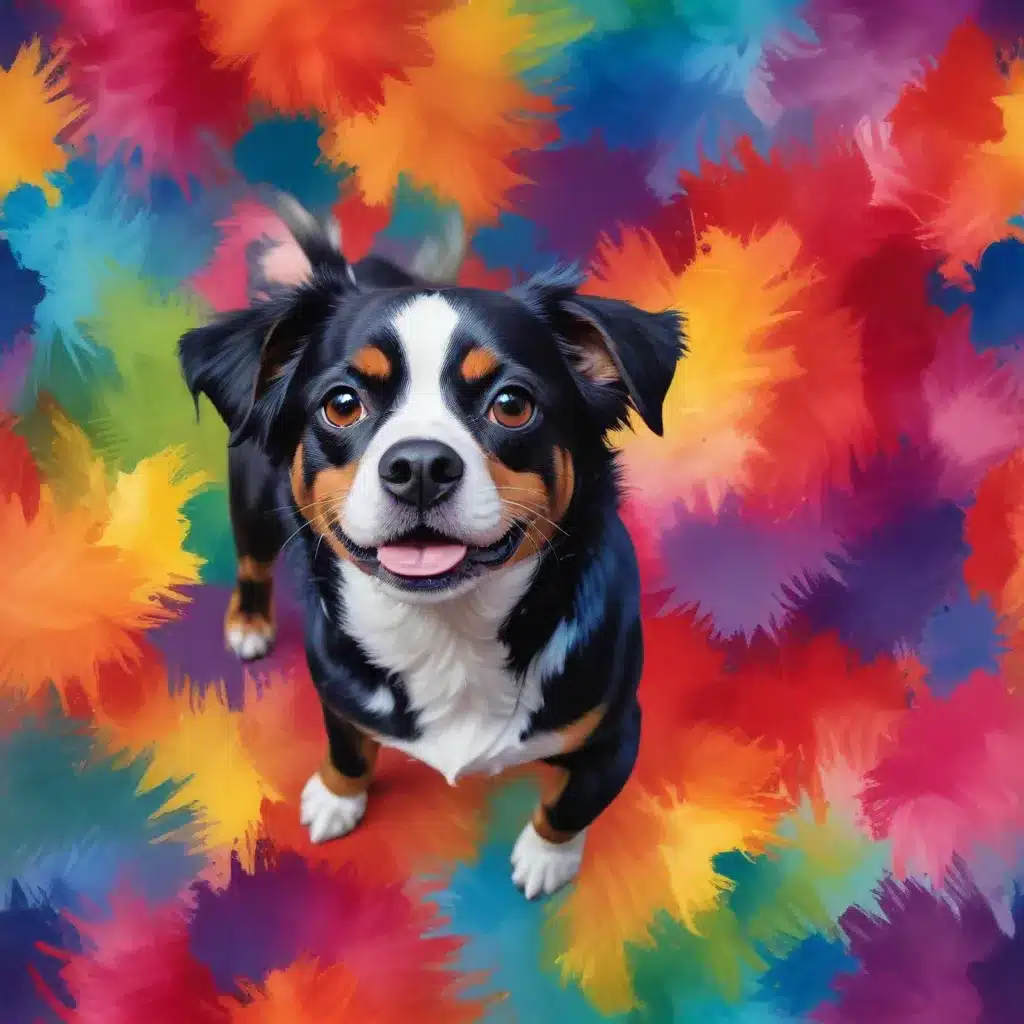
The Power of Color in Pet Portraiture
As an experienced artist and educator, I’ve witnessed the transformative power of color in pet portraiture. Capturing the essence of our beloved animal companions requires a deep understanding of color theory and the ability to blend hues with precision. In this comprehensive guide, we’ll delve into the secrets of vibrant color mixing, exploring techniques that will elevate your pet art to new heights.
Mastering the Color Wheel
The foundation of color theory lies in the color wheel – a visual representation of how colors relate to one another. By understanding the primary, secondary, and tertiary colors, as well as the relationships between warm and cool hues, you can start to unlock the potential of color in your pet portraits.
One key principle to remember is the concept of complementary colors. Colors that sit opposite each other on the color wheel, such as red and green or blue and orange, create a striking contrast when used together. Strategically incorporating complementary colors can add depth, vibrancy, and visual interest to your pet paintings.
Exploring Palettes for Pet Portraits
When it comes to painting our beloved animal companions, the color choices we make can greatly impact the overall mood and atmosphere of the piece. Let’s explore a few palettes that work exceptionally well for pet art:
Vibrant and Energetic: For a lively, playful portrait, consider a palette rich in primary and secondary colors. Think bold reds, vibrant blues, and energetic yellows. This palette can capture the boundless energy and enthusiasm of our canine friends.
Serene and Calming: To convey a sense of tranquility and serenity, a palette of soft, muted hues can be incredibly effective. Subdued greens, delicate blues, and soothing grays can create a peaceful and contemplative atmosphere, perfect for capturing the grace and elegance of our feline companions.
Earthy and Naturalistic: Evoking a connection to the natural world, an earthy palette of browns, ochres, and greens can beautifully represent the rugged beauty of our furry, feathered, or scaled friends. This approach can lend a sense of authenticity and grounding to your pet portraits.
Monochromatic Masterpieces: Focusing on a single color family, such as shades of gray or warm sepia tones, can create a striking and sophisticated effect. Monochromatic pet portraits often have a timeless, classic appeal, allowing the form and texture of your subject to take center stage.
Blending Techniques for Vibrant Color
Mastering the art of color blending is crucial for achieving rich, vibrant hues in your pet portraits. Experiment with different techniques, such as wet-on-wet, dry brushing, and glazing, to create the desired effect.
Wet-on-Wet: Applying wet paint to a wet surface allows the colors to seamlessly blend and mingle, creating a soft, atmospheric quality. This technique can be particularly effective for rendering fur, feathers, or scales with a sense of depth and movement.
Dry Brushing: Using a dry, stiff brush to gently stipple or drag paint onto the surface can add textural interest and a sense of liveliness to your pet’s features. This method can help you capture the individual strands of fur or the intricate patterns of a reptile’s skin.
Glazing: Building up layers of thin, transparent paint can create a luminous, jewel-toned effect. Glazing allows you to gradually deepen and intensify your colors, achieving a level of depth and richness that can be truly captivating.
Harnessing Artistic License
While striving for realism is often the goal in pet portraiture, it’s important to remember that you have the artistic license to interpret and enhance your subject matter. Don’t be afraid to take creative liberties with your color choices, exaggerating or modifying hues to better convey the personality and spirit of your furry, feathered, or scaly model.
Experiment with bold, expressive brushwork, unexpected color combinations, and stylized elements to create a truly unique and captivating pet portrait. By embracing your artistic vision, you can elevate the emotional impact and visual appeal of your work.
Unlocking Inspiration through Observation
One of the keys to mastering vibrant color in pet art is keen observation. Take the time to study your subjects, whether in person or through photographic references, and pay close attention to the nuances of their coloration.
Notice the subtle shifts in tone and value within a single coat or feather. Observe how light interacts with the surface of your subject, creating highlights, shadows, and reflections. Immerse yourself in the rich, varied hues that make up the intricate patterns and markings of your animal companions.
This deep understanding of your subject’s coloration will empower you to make informed and intentional choices when mixing and applying your paints, resulting in a more authentic and captivating pet portrait.
Putting It All Together
By embracing the principles of color theory, experimenting with diverse palettes, and mastering blending techniques, you can unlock a world of vibrant, expressive pet art. Remember to allow your artistic vision to guide your color choices, and let your keen observation of your subjects inform the color mixing process.
With practice and dedication, you’ll develop the skills to create pet portraits that not only capture the physical likeness of your subjects but also convey their unique personalities and emotional resonance. Embrace the power of color and let your pigment prowess shine through in every brushstroke.
To further your artistic journey, I encourage you to explore the resources available on the Pencil and Paint Muse blog, where you’ll find a wealth of informative articles, tutorials, and inspiration for all your creative endeavors.